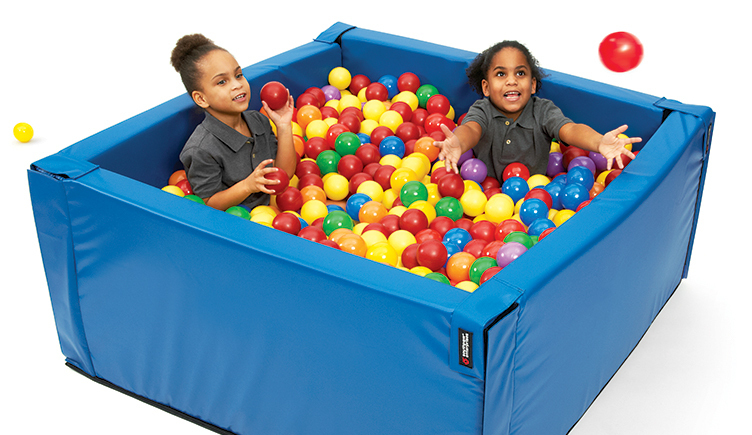Many occupational therapy (OT) programs across the country are developing sensory labs that are innovative, hands-on spaces that immerse students in the world of pediatric practice. These labs are designed to replicate the environments and activities that therapists use to help children improve sensory processing, motor skills, and participation in meaningful daily activities. By integrating movement, play and problem-solving into the learning environment, sensory labs give OT and occupational therapy assistant (OTA) students the opportunity to explore therapeutic interventions in a realistic, engaging and supportive setting. They provide students with a bridge between classroom learning and clinical practice, allowing them to take what they have learned in lectures and apply it directly in a controlled, experiential way.
At the University of Southern Indiana (USI), both OT and OTA students have access to the Dr. Victor V. Schriefer, Jr. Therapeutic Intervention Classroom, located within the Stone Center for Family and Health Sciences. This state-of-the-art facility has been carefully designed to meet the needs of pediatric clients and to provide a rich learning environment for students. The lab features multiple types of swings (platform swings, moon swing, snuggle swing, and bolster swings), a rock-climbing wall, landing mat, a zip line, a fold & go trampoline, crash pads, scooter boards, institutional padded tunnel, resistance tunnel with therapy ball, therapy balls, and other sensory tools. Together, these elements create an ideal space to practice interventions that address sensory processing, balance, bilateral coordination, postural control and motor planning. Students are encouraged to think creatively and adapt activities to meet the needs of individual clients, an essential skill in occupational therapy practice.
For students in the Master of Science in Occupational Therapy (MSOT) and the Occupational Therapy Assistant programs at USI, the sensory lab is not just an occasional experience but an integral part of their education. The lab is used across the curriculum, allowing students to progressively build competence and confidence as they advance through the program. One of the most impactful experiences in both programs occurs during the first summer of their curriculums, where students transition from simulated practice to working with real pediatric clients. In these courses, students are responsible for designing and implementing a treatment plan, taking into consideration each child’s unique strengths, challenges and goals.
Working in small groups under faculty supervision, students create session plans, choose appropriate activities, and carry out interventions using the lab’s equipment. This hands-on experience not only strengthens their ability to analyze sensory and motor components of play but also develops their ability to collaborate with peers, use therapeutic communication effectively, and adapt sessions in real time to meet client needs.
An equally important component of the experience is documentation and reflection. After each session, students complete a daily progress note for every child they treat, just as they will be required to do in fieldwork and professional practice. This helps them refine their observation skills, learn how to measure and record outcomes, and develop professional writing habits that meet documentation standards. Faculty provide feedback on session design, clinical reasoning, and documentation, helping students improve with each session.
This unique, immersive approach benefits everyone involved. For the children and families who volunteer as clients, participation in the sensory lab is often a fun and empowering experience. Many parents report that their children look forward to coming back each summer, and the children themselves leave sessions smiling and proud of their accomplishments.
For students, these experiences are transformative. They not only gain technical and clinical skills but also learn problem-solving, collaboration, and reflection on their growth as future practitioners. By the time they enter fieldwork placements, students are better prepared to handle the demands of clinical practice, having already designed interventions, documented client progress, and adapted to the needs of real children in a structured learning environment.
Ultimately, the Dr. Victor V. Schriefer, Jr. Therapeutic Intervention Classroom embodies USI’s commitment to experiential learning and to preparing graduates who are confident, skilled and compassionate practitioners. It is a space where theory comes alive, where students transform knowledge into action, and where children get to play, learn and grow alongside the next generation of occupational therapy professionals.



